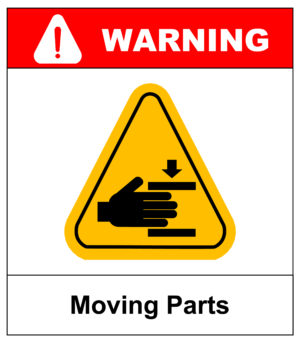
THE ALL IMPORTANT DISTRIBUTION PHASE OUT OF INDEXED UNIVERSAL LIFE INSURANCE OR OTHER TYPES OF UNIVERSAL LIFE FOR CASH VALUE INCOME


It’s no secret the latest and greatest life insurance product is indexed universal life insurance as a cash accumulation vehicle with the added pitch of upside potential and no downside risk. This section will deal with Indexed Universal Life and other universal life insurance products, not whole life insurance, which has its own set of issues and is built on a different chassis.
This product along with any other permanent cash value life insurance products are often positioned in the right situation and for the appropriate person as a supplemental retirement tool, adding a taxfree bucket of retirement income to go along with the more traditional tax-deferred retirement savings resources such as 401(k) plans, IRAs (except Roth IRAs), and other taxable buckets, such as brokerage accounts, stocks, etc.
Companies for indexed universal life insurance provide a variety of allocation strategies to help ride out the highs and lows of the market in the accumulation phase. However, there should be concerns about overly aggressive illustrated rates of return and substantial buckets of income via withdrawals and loans during the distribution phase for retirement purposes, which if not watched carefully can cause major issues and derail any policy in the future.
Policies with cash values when designed for supplemental retirement income purposes provide these advantages:
Tax Deferral
Taxfree distributions (when properly managed)
No contribution limits based on income
Roth IRA alternative
No premium limits in relation to face amount (subject to policy design and MEC guidelines)
No pre 59 1/2 distribution penalties
No RMD requirement
Taxfree death benefit
Typically, when using IUL as an accumulation vehicle for supplemental retirement income purposes. The illustration approach to accomplish maximum overfunding (within MEC guidelines) uses an increasing death benefit (option 2 – face amount plus annual accumulated cash value increases) then switching to a level death benefit (option 1 – face amount only) at the optimum distribution time. This design helps maximize cash accumulation and distributions, which is the goal.
In addition, the illustrations are run showing projected distributions which are structured as a withdrawal of funds up to the client’s cost basis (premiums paid into the policy), then switching to loans to maintain a taxfree distribution stream of income. There can be, of course, other design approaches depending on the individual’s personal situation; however, this is traditionally how these scenarios are illustrated.
A majority of insurance companies focusing on IUL and the accumulation market also offer an overloan protection rider, which essentially freezes policies when loan balances exceed a certain threshold as a percentage of cash value in the policy. This inhibits the policyholder from continuing to take additional loans from the policy, preventing the policy from lapsing and creating a potential tax situation.

Here are some IMPORTANT QUESTIONS to have answered regarding administration when using IUL as a supplement to retirement income. Remember you won’t be taking money for a long period of time. You may have to work harder during the distribution phase and be more proactive in the management and monitoring of the policy.
(1) What can or does the company do to help you manage the policy, specifically in the distribution phase?
(2) What is required to request income both initially and moving forward?
(3) What is required to switch from option 2 to option 1 and who is responsible for initiating the reminder to make the change?
(4) What is required to switch from withdrawals to loans and who is responsible for initiating a reminder to make the change?
(5) What is required to activate the overloan protection rider and who is responsible for initiating a reminder to activate it?
(6) What is the process for determining income and who is responsible for initiating these requests? Usually the insured / owner
with in-force illustrations.
GETTING CASH OUT OF YOUR POLICY, E.G. INDEXED UNIVERSAL LIFE OR ANY UNIVERSAL LIFE INSURANCE POLICY
For the insured / owner getting cash out of an IUL policy can feel like entering an administration maze. Hopefully not a financial nightmare. If retirement distributions begin in a stable or rising market, the client has the potential to preserve or even grow their retirement assets. If a client begins retirement distributions in a declining market, they are both drawing down on assets and policy values are reducing. Their retirement assets may begin to erode faster than initially planned. The bottom line is that the distribution of retirement funds must be managed carefully so a client doesn’t spend down the retirement nest egg much quicker than anticipated and potentially run out of money in retirement.


I mention this because, similar to the challenge of managing the sequence of returns in traditional investment / retirement account during the distribution phase of retirement, the same careful management in the distribution phase-out of an IUL cash value life insurance policy is a necessity. If not properly managed and the policy lapses, the client will receive a 1099 representing the taxable gain in the policy and be hit with a tax nightmare. Remember policy withdrawals and loans are extinguished at death with the remainder of the policy paid to a designated beneficiary. The idea is to just take enough and make sure the policy remains in-force through the end of life.

MOVING PARTS
You must understand the numerous moving parts and required paperwork for effective management during the distribution phase of the policy. Here are some of the moving parts, which can be challenging for the unwary.
Can you maintain the same index or investment strategy used during the accumulation phase when taking money out of the policy during the distribution phase? It may have to be changed to something more conservative.
Remember the policy has to remain in-force during the distribution phase so all loans are extinguished at the end of life.
The option 2 death benefit needs to be changed to option 1. Failure to make this change will reduce the amount of income received or cause the policy to underperform and, potentially, lapse in distribution years if the insured / owner takes out consistent and significant withdrawals and loans.
Switching from withdrawals to loans must be requested. If withdrawals are more than the basis (premiums paid) in the contract, it is a taxable event.
Completing paperwork when a distribution is desired.
An overloan protection rider must be activated by the policy owner. If it isn’t, then the policy lacks the necessary safeguard to keep from lapsing and preventing a taxable event.
Annual recalculation of income based on performance.
WHAT TO DO? Request numerous in-force illustrations before touching any money.
After paying years of premiums, remember the important distribution phase of the policy.
And, if not done right can cause a disastrous tax-time bomb you don’t want later on in life.

